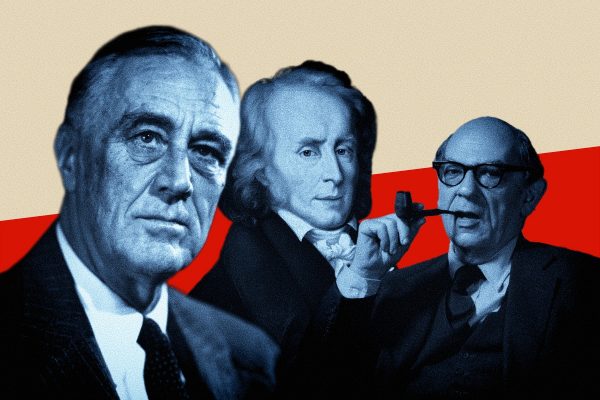The Americanization of Narcissism
Elizabeth Lunbeck
Harvard University Press, $35 (cloth)
I can remember as though it were yesterday, my jaw dropping when, in 1978, Christopher Lasch’s Culture of Narcissism was published, and I discovered in its pages that as a radical feminist of long standing I qualified as a major narcissist of what the journalist Tom Wolfe had dubbed the “Me Decade.” We, whose rallying cry was “Not for ourselves alone”? We, who hoped to see all future relations between men and women take place on a level playing field? We, who thought power over ourselves would mean we’d never want power over others? We were narcissists?
The Americanization of Narcissism, by the historian Elizabeth Lunbeck, is a deeply researched account of the long and complicated life the concept of narcissism has had among psychoanalysts, as well as its short, oversimplified one at the hands of the social critics who in the 1970s chose to make polemical use of it. As such, this book is by way of being a corrective. Its author seeks to rescue narcissism from the distortions she feels it has been subjected to by the critics who, instead of addressing the noisy discontent of their time with sympathetic interest, sought only to castigate it, and in the process did irreparable harm to any working definition of narcissism that was ever in analytic use.
“From the beginning,” Lunbeck writes, “analysts used narcissism to account for the best and worst in us, to explain our capacities for creativity and idealism as well as for rage and cruelty, our strivings for perfection and our delight in destructiveness.” In its fullest sense, narcissism is a complicated theory of human development that, to begin with, includes a description of the healthy selfishness that an infant or a youth demonstrates in seeking to stand on its own two feet. When one matures, this infantile selfishness drops away as one becomes an independent person with a proper respect for one’s own needs as well as the needs of others. When the process goes off the rails, and there is a failure to mature, elements of primitive self-involvement linger on throughout one’s adult years. Then, if a person is dominated by infantile self-absorption, we say they have narcissistic personality disorder.
In America, in the 1970s, two eminent analysts became famous for arguing the polarizing characteristics of narcissism—on the one hand it was normal, on the other pathological—and the analyst who argued for the pathological won the day. Heinz Kohut concentrated on the normalizing aspect of narcissism, describing it not as “navel-gazing” but rather as a means of attaining a healthy sense of self-esteem. As Lunbeck tells it, he “outlined a normal narcissism that was the wellspring of human ambition and creativity, value and ideals, empathy and fellow feeling. . . . positively tinged, replete with possibility, and necessary to sustain life.” Otto Kernberg, by contrast, described narcissism as a malignancy, a disorder of the kind that froze human empathy in its tracks. “Kernberg’s clinical writing chronicles the deformation of human relatedness,” Lunbeck explains, “presenting readers with an astonishing range of ways we as humans have devised to mistreat, exploit, and destroy one another—and ourselves.”
Social critics embraced a definition of narcissism that swept discontent under the rug.
It was the pathology of narcissism that drew the attention of analysts who—finding themselves stumped by patients whose ailments reflected the social confusion of the moment, and not knowing quite how to deal with it—were quick to characterize those who complained endlessly of an “inner emptiness” as victims of the disorder. And the times being what they were, social critics followed suit, immediately embracing Kernberg’s point of view and marginalizing Kohut’s. It was the critics who fed a confused nation, hungry for some oversimplification of the forces pulling its world apart, a definition that distorted the complexities of narcissism itself while sweeping legitimate discontent under the rug.
“Only by understanding the controversies around narcissism’s organizing concepts,” Lunbeck writes, “and only by appreciating how resonant with their own concerns social critics found these controversies, can we account for how eagerly narcissism was embraced and how readily it found a home in a nation that Freud thought so inhospitable to his science of psychoanalysis.” The analysts themselves rejected the idea that society could produce either normal or pathological narcissism, considering the claim a desperate attempt to explain what Lasch called the “underlying character structure” of the age. But the critics would not be denied.
For Lunbeck, Lasch was the worst of these critics. His was the grossest misapplication of the concept of narcissism. It was through Lasch, Lunbeck writes, that in the 1970s “narcissism was cast as a pathology associated with worldly affluence and abundance, and remained so for thirty years, obscuring its roots” in a neurosis that could be traced only to an individual’s unique sense of infantile deprivation. In the hands of Lasch and other critics, this neurosis, invariably to be located in the family of origin, became a product of social influences experienced as an adult.
Lunbeck’s primary interest here is the intellectual history of narcissism and, as such, her book is mainly devoted to a taxonomy of its various definitional twists and turns among psychoanalysts through the decades since Freud first addressed the subject in 1914. But for this reader it is her rehearsal of the use and misuse of the term in the 1970s that is the richest part of her book. Not only is it immensely evocative of the times themselves, but it also traces beautifully the way a valuable concept that includes a necessary stage of human development became permanently identified as a personality disorder that swallowed whole the larger, far more generous idea of the self that had been developing in the West for fifty years and more, into which narcissism should only have been enfolded.
At the turn of the twentieth century, an indescribable restlessness born from decades of revolutionary uprising in Europe began turning the Western world sharply away from the long-held conviction that human beings are creatures of reason and moral self-control with obligations rather than rights. In place of this outworn faith, the West moved toward a contemplation of people as creatures of feeling and instinct whom history had systematically ignored or denied. An enormous change—soon to be known as modernism—in how ordinary people were coming to view the development of their own lives was in progress. Chief among the influences driving this change was the work of Sigmund Freud, whose open lectures, then being given in Vienna, were electrifying all of Europe.
As every kind of authority—church, family, custom—was being called into question, the most basic articles of social faith began to loosen their hold. This development allowed for the entertainment of thoughts and emotions hitherto unthinkable. Suddenly, it was as though a pressing need for inner fulfillment seized hold of a culture previously given to restraint and repression, and an epic struggle was begun between the old-fashioned need for law and order and the newer-fashioned one for rights rights rights: workers wanted the right to unionize, women wanted the right to vote, everyone wanted the right to unmarried sex.
A sea change in human self-definition was taking place but its significance was beyond those who longed only for things to stay as they were. Instead of trying to understand what was happening and why, they chose to see the social chaos as criminal and to look for the villain on whom to lay the blame. Ah, they had one. It was the incredible, unheard of, never-before-seen selfishness—that is, the self-love—of this generation of reckless, childish people playing at revolution, refusing to grow up and assume its ordained responsibilities. There was your culprit!
Half a century later, the task of modernism hardly having been completed, this scene was to replay itself, but this time with a culprit more exotically named by those who once again wished for things to stay as they were. America in the 1960s was also a culture split down the middle and approaching an instability that promised implosion. Here you had a middle class that was the freest, richest, most educated in the world complaining bitterly of an inner emptiness that seemed engulfing. At the same time there was a stalled war in Vietnam where Americans were dying gratuitously, and a stalled civil rights movement at home where Americans were dying shamelessly. From this crisis there emerged the twin developments of the consciousness movement and the counterculture. Out of the consciousness movement came an army of therapists and writers of how-to and what-it-all-means books that is with us to this day. And out of the counterculture came the liberationist movements whose slogans echoed those of that earlier phase of modernism, only this time the rights that were wanted cut deeper than ever before.
Emboldened by fifty years of Freud and Marx, the counterculture laid claim to the time-honored American ideal of self-realization. Unexpectedly, it was women and homosexuals, more than any other class with its voice raised, who, politically speaking, came to embody the ideal. Under the influence of this powerful national discontent, women and gays had become aware of the second-class citizenship that characterized their lives and were now finding the courage to speak out, to insist that their irreducible humanity be recognized before the law and in social custom. Essentially, they were insisting that the republic honor its broken promise of full egalitarianism, and overnight, it seemed, they were out in the street in numbers that radicals found exhilarating, conservatives frightening. This time around, the keepers of a disintegrating culture had a more glamorous name for the cause of the disruption than mere selfishness: narcissism!
Freedom in the past century was profoundly linked to the idea of self-discovery.
The negative application of the concept of narcissism was monolithic, though the life around us so full of contradiction. It was hard to know why so many critics allowed themselves to record only the abuses (and indeed there were many) of both the consciousness and the liberationist movements while ignoring the vital seeds of social change that were being planted amidst all the hullabaloo.
It was Lasch who, more influentially than any of the others, beat the drum for America having become a society of middle-class consumers on the one hand and radical protesters on the other. Between them, they were like the malignant, fantasy-ridden children everyone knew narcissists to be, destroying the only thing that mattered: social stability.
And what was the essential form that social stability took for Lasch? The family. The family, he claimed, that “haven in a heartless world” for men such as himself, was more important than any argument for individuation that anyone could be making. Individuation, for Lasch, was narcissism. “To live for the moment is the prevailing passion,” Lasch wrote, “to live for yourself, not your predecessors or posterity.” Thus the women’s movement in particular was doing untold damage to the family as we knew it. There was no doubt, he conceded, that the subjugation of women under the patriarchy that had made us all what were today was truly terrible. But, he concluded, yesterday’s fiction of female helplessness and male protectiveness was useful. At the very least it insured a modicum of civilized behavior. Awful as it all was yesterday, Lasch seemed to be saying, it was better than it is today; the unspoken half of that sentence being, when papa got respect, and mama knew her place, and the kids didn’t talk back.
Why, one wondered, did the critics not make a case for the liberationists as an exemplary instance of the “good” narcissism at work? Why did the critics not see that what, at that moment, looked like the selfishness of these thousands of women and gays out in the street was the selfishness, necessary to a politically adult independence, of one emerging from a long cultural childhood. By the same token, why, one also wondered, did they look to the worst of the consciousness movement (to all that was indeed foolish and half-baked in it) instead of to the best of it; to the fact that it contained large and powerful insights that were striking chords in countless young people struggling to lead serious lives; insights from which, historically speaking, there would be no turning back.
The subtitle of Lasch’s book is “An Age of Diminishing Expectations.” That, unfortunately, was the way the world looked to a white, middle-class man without the gift of empathy who found all the social tumult depressing rather than stimulating, and who, feeling the ground beneath his own feet beginning to give way, came perilously close to idealizing a solidity of the past that never was.
For better or worse, for political riches or social poverty, freedom in the past century was profoundly linked to the idea of self-discovery. For many of us, in the ’60s, civilization seemed to be re-forming itself in miniature within each of us, not for the purpose of attaining self-absorbed privilege but, on the contrary, so that free adult beings might reach out to each other in strength rather than weakness. It seemed to me then and it seems to me now that this sense of new life within us—strong, vibrant, unruly—was like a weed pushing up through concrete. The point was to keep your eye on the weed. The critics had their eyes on the breaking concrete.
A time, like a human being, can never be the sum of its disabilities, and the business of the historian is to place those disabilities in illuminating perspective. Elizabeth Lunbeck’s book does this beautifully.
Editors' Note: Read George Scialabba's response to Vivian Gornick here.
Photograph: Loving Earth








